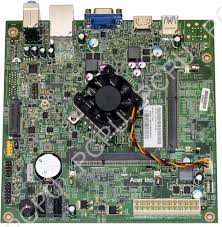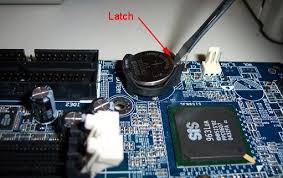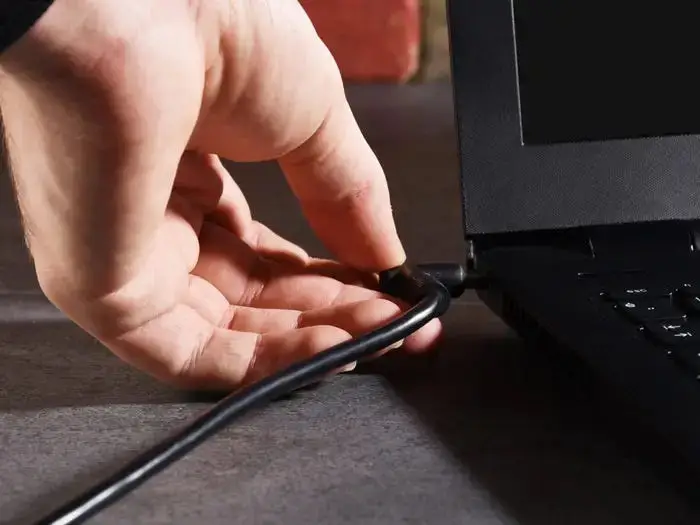The Acer Aspire XC-603G is a popular desktop computer known for its compact design and solid performance. Like any other computer, understanding the internal components of the Acer Aspire XC-603G can be crucial for troubleshooting, upgrading, or simply getting the most out of your machine. One key aspect of this is understanding the motherboard jumper pinout.
The Acer Aspire XC-603G motherboard jumper pinout helps you connect and configure different components on the motherboard. These small pins are used to reset the BIOS, clear CMOS, or set the motherboard’s operating mode.
This article will discuss “Acer Aspire Xc-603g Motherboard Jumper Pinout”.
Table of Contents
What is a Jumper Pinout?
Jumper pinouts are small pins found on a motherboard that are used to configure specific settings for the hardware. By connecting or disconnecting a jumper (a small plastic cap) to these pins, you can change how your motherboard behaves.
For example, you might adjust the CPU frequency, clear the CMOS, or reset the BIOS password.
Overview of Acer Aspire XC-603G Motherboard:
The Acer Aspire XC-603G motherboard is designed for compact desktops, offering a range of features suitable for everyday computing tasks.

It includes multiple connectors, slots, and pins, including those for jumpers. Understanding the layout of this motherboard is essential before you begin making any changes to the jumper settings.
Locating Jumper Pinouts on Acer Aspire XC-603G:
To find the jumper pinouts on your Acer Aspire XC-603G motherboard, you’ll need to open your computer case. Once inside, look for the pins labeled with names like “CLR_CMOS” or “PSWD.”
These labels are usually printed directly on the motherboard. Refer to your motherboard’s manual for a detailed diagram that shows the exact locations of these pins.
Understanding Different Jumper Settings:
Motherboards come with a variety of jumper settings, each serving a different purpose. On the Acer Aspire XC-603G, common jumper settings include:
- CLR_CMOS: Used to clear the CMOS memory.
- PSWD: Used to reset the BIOS password.
Each setting has a specific function, and knowing these can help you avoid mistakes when configuring your motherboard.
How to Change Jumper Settings:
Before changing any jumper settings, ensure you follow these safety precautions:
- Power Off Your PC: Always turn off and unplug your PC before making any changes.
- Use Proper Tools: A pair of needle-nose pliers or tweezers can help you move the jumper cap safely.
- Ground Yourself: Use an anti-static wrist strap to avoid damaging your motherboard with static electricity.
Once you’ve taken these precautions, locate the jumper pin, and move the jumper cap to the desired position according to your motherboard manual.
Read: What Is T Sensor On Motherboard – A Complete Guide Of 2024!
BIOS Configuration and Jumper Settings:
The BIOS (Basic Input/Output System) plays a crucial role in managing your computer’s hardware settings.
Jumper settings can influence the BIOS, especially when it comes to things like clearing a BIOS password or resetting the CMOS. Understanding this relationship is key to managing your motherboard effectively.
Resetting CMOS Using Jumper:
The CMOS (Complementary Metal-Oxide-Semiconductor) stores BIOS settings, and sometimes, you might need to reset it to troubleshoot issues.
To reset the CMOS on the Acer Aspire XC-603G, locate the CLR_CMOS jumper, move the jumper cap to the reset position for a few seconds, then return it to its original position.
Clearing BIOS Password Using Jumper:
If you’ve forgotten your BIOS password, you can use the PSWD jumper to clear it. Turn off your computer, locate the PSWD jumper, and move the cap to the clear position.
Wait for a few seconds, then move it back to the original position and restart your computer.
Troubleshooting Jumper Issues:
Jumper settings can be tricky, and incorrect configurations may lead to problems. If your PC fails to boot after changing jumper settings, try resetting the CMOS or double-checking that all jumpers are in the correct position.
It’s always a good idea to consult your motherboard’s manual when troubleshooting jumper-related issues.
Jumper Settings for Hardware Upgrades:
When upgrading hardware, certain jumper settings may need to be adjusted to ensure compatibility.
For example, adding a new hard drive or memory module might require changes in the BIOS, which can be managed through the appropriate jumper settings.
Impact of Incorrect Jumper Settings:
Setting jumpers incorrectly can cause your system to malfunction or even damage your motherboard.
Always double-check the jumper positions before powering on your computer, and make sure you understand the purpose of each jumper setting.
Expert Tips for Managing Jumper Pinouts:
Managing jumper settings can seem daunting, but with a few expert tips, you can handle it like a pro:
- Label Your Jumpers: Use small labels to mark jumper positions before making changes.
- Keep a Log: Record any changes you make to jumper settings for future reference.
- Consult the Manual: Your motherboard’s manual is your best friend when dealing with jumper settings.
How do I clear the CMOS jumper on my Acer?

Locate the CMOS jumper on your motherboard. Move it from the default position to the clear position. Wait 5-10 seconds, then move it back. This resets BIOS settings. Always refer to your manual for the exact jumper location.
What are the specs of Acer Aspire XC 603G?
The Acer Aspire XC-603G features an Intel processor, 4GB RAM, and a 500GB hard drive. It includes integrated graphics, multiple USB ports, and HDMI output. The compact design makes it suitable for basic computing tasks.
Acer Aspire XC 603G motherboard jumper pinout upgrade?
The motherboard’s jumper pinout allows hardware configurations and BIOS settings adjustments. Upgrading involves changing jumper positions based on your needs, like clearing CMOS or setting system defaults. Refer to your motherboard manual for specific pinout details.
Acer Aspire XC 603G motherboard jumper pinout spec?
The motherboard jumper pinout for Acer Aspire XC-603G includes pins for clearing CMOS, enabling BIOS recovery, and other configurations. Each jumper serves a specific function. Check your motherboard’s documentation for detailed specifications and correct usage.
Read: Acer Aspire Xc 603g Motherboard Tx1 Pinout – A Guide of 2024!
Acer Aspire XC 603G motherboard jumper pinout not?
If the jumper pinout isn’t working, check if it’s correctly placed according to the manual. Ensure the system is powered off when adjusting jumpers. Faulty hardware or incorrect settings might also cause issues.
Acer Aspire XC-603G specs?
The Acer Aspire XC-603G features an Intel processor, 4GB RAM, and a 500GB hard drive. It includes integrated graphics, USB ports, HDMI output, and a compact design, making it suitable for everyday computing needs.
Acer Aspire XC-603G Unable to Boot?
If your Acer Aspire XC-603G isn’t booting, check power connections, RAM seating, and monitor cables. Clear the CMOS by adjusting the jumper settings. If the issue persists, consider consulting a professional for hardware diagnostics.
Acer Aspire axc-603g-uw13?
The Acer Aspire AXC-603G-UW13 is a desktop model featuring an Intel processor, 4GB RAM, and a 500GB hard drive. It’s designed for basic computing tasks, offering a compact size and various connectivity options like USB and HDMI.
Acer Aspire XC-603G upgrades?
Upgrades for the Acer Aspire XC-603G include adding more RAM, replacing the hard drive with an SSD for faster performance, and installing a discrete graphics card if the system supports it. Always check compatibility before upgrading.
Acer Aspire XC-603G release date?
The Acer Aspire XC-603G was released in 2014. It was designed as an affordable, compact desktop computer for everyday use, offering basic specs suitable for tasks like web browsing, office work, and media playback.
What is the Acer Aspire XC-603G motherboard TX1 pinout?
The TX1 pinout on the Acer Aspire XC-603G motherboard is used for specific functions like resetting BIOS or connecting additional hardware. Refer to your motherboard’s manual for exact details on what each pin does.
How can I use the TX1 pinout for troubleshooting?
To troubleshoot with the TX1 pinout, connect the appropriate jumper or hardware to reset BIOS, clear CMOS, or perform diagnostics. This can help resolve boot issues or hardware conflicts. Always refer to your manual for proper use.
Can I connect extra storage using the TX1 pinout?
The TX1 pinout is generally not used for connecting extra storage. It’s primarily for BIOS functions and diagnostics. To add storage, use available SATA ports or external USB connections compatible with your Acer Aspire XC-603G.
Is it possible to add LED lighting to the TX1 pinout?
Adding LED lighting directly to the TX1 pinout is not recommended, as it’s meant for BIOS and diagnostic functions. For LED lighting, use dedicated headers or connectors designed for that purpose on your motherboard or case.
What should I check if my system doesn’t power on?

If your system doesn’t power on, check power connections, ensure the PSU is working, and verify the power button is functioning. Clear CMOS using the jumper settings. If the issue persists, check for faulty components or seek professional help.
FAQs:
How do I identify jumper pinouts on my motherboard?
Look for labels like CLR_CMOS or PSWD near small pins on your motherboard. Your motherboard’s manual will also have a detailed diagram.
Can changing jumper settings damage my motherboard?
Yes, incorrect jumper settings can cause damage or prevent your computer from booting. Always follow the manual’s instructions.
What should I do if my PC doesn’t boot after changing jumper settings?
Try resetting the CMOS or double-checking the jumper positions. Refer to your manual for troubleshooting tips.
Is it necessary to change jumper settings when upgrading hardware?
In some cases, yes. Upgrading certain components may require you to adjust BIOS settings via jumpers.
How often should I reset the CMOS using the jumper?
Only reset the CMOS when necessary, such as when troubleshooting hardware issues or clearing BIOS settings.
Conclusion:
To manage the Acer Aspire XC-603G motherboard jumper pinout, follow your manual carefully. Jumper settings help configure your system, like resetting BIOS or clearing CMOS. Always be cautious when changing jumper positions to avoid damaging your motherboard. Understanding and using these settings properly can help troubleshoot and upgrade your computer safely.
I have 15 years of experience in the PC motherboard industry. I am passionate about helping people understand computer technology and write in a way that’s easy to follow. My expertise ensures that my articles provide valuable insights and practical advice for anyone interested in PC components, regardless of their technical background. My goal is to make complex topics accessible and useful for readers around the world.

[…] Acer Aspire Xc-603g Motherboard Jumper Pinout – Complete Guide – 2024! Are Asrock Motherboards Good – Comprehensive Guide Of 2024! Can Motherboards Bottleneck -A Comprehensive Guide Of 2024! Are MSI Motherboards Good – Discover MSI’s Quality Now! […]
[…] Acer Aspire Xc-603g Motherboard Jumper Pinout – Complete Guide – 2024! Are Asrock Motherboards Good – Comprehensive Guide Of 2024! Can Motherboards Bottleneck -A Comprehensive Guide Of 2024! Are MSI Motherboards Good – Discover MSI’s Quality Now! […]
[…] Is T Sensor On Motherboard – A Complete Guide Of 2024! Acer Aspire Xc-603g Motherboard Jumper Pinout – Complete Guide – 2024! Are Asrock Motherboards Good – Comprehensive Guide Of 2024! Can Motherboards Bottleneck […]
[…] – A 2024 Guide! What Is T Sensor On Motherboard – A Complete Guide Of 2024! Acer Aspire Xc-603g Motherboard Jumper Pinout – Complete Guide – 2024! Are Asrock Motherboards Good – Comprehensive Guide Of 2024! Can Motherboards Bottleneck […]
[…] – A 2024 Guide! What Is T Sensor On Motherboard – A Complete Guide Of 2024! Acer Aspire Xc-603g Motherboard Jumper Pinout – Complete Guide – 2024! Are Asrock Motherboards Good – Comprehensive Guide Of 2024! Can Motherboards Bottleneck […]
[…] – A 2024 Guide! What Is T Sensor On Motherboard – A Complete Guide Of 2024! Acer Aspire Xc-603g Motherboard Jumper Pinout – Complete Guide – 2024! Are Asrock Motherboards Good – Comprehensive Guide Of […]
[…] Acer Aspire XC-603G motherboard features TX1 pinout connectors, which include power, audio, and front panel connections. The exact specs can […]
[…] connect RGB, plug the RGB cables into the correct headers on your motherboard. Check the motherboard manual for pinout details. Use software like Aura Sync to manage lighting effects, ensuring everything is properly […]
[…] Guide Of 2024! Are Asrock Motherboards Good – Comprehensive Guide Of 2024! Acer Aspire Xc-603g Motherboard Jumper Pinout – Complete Guide – 2024! Does Any Power Supply Work With Any Motherboard – Guide of 2024! How Long Do […]